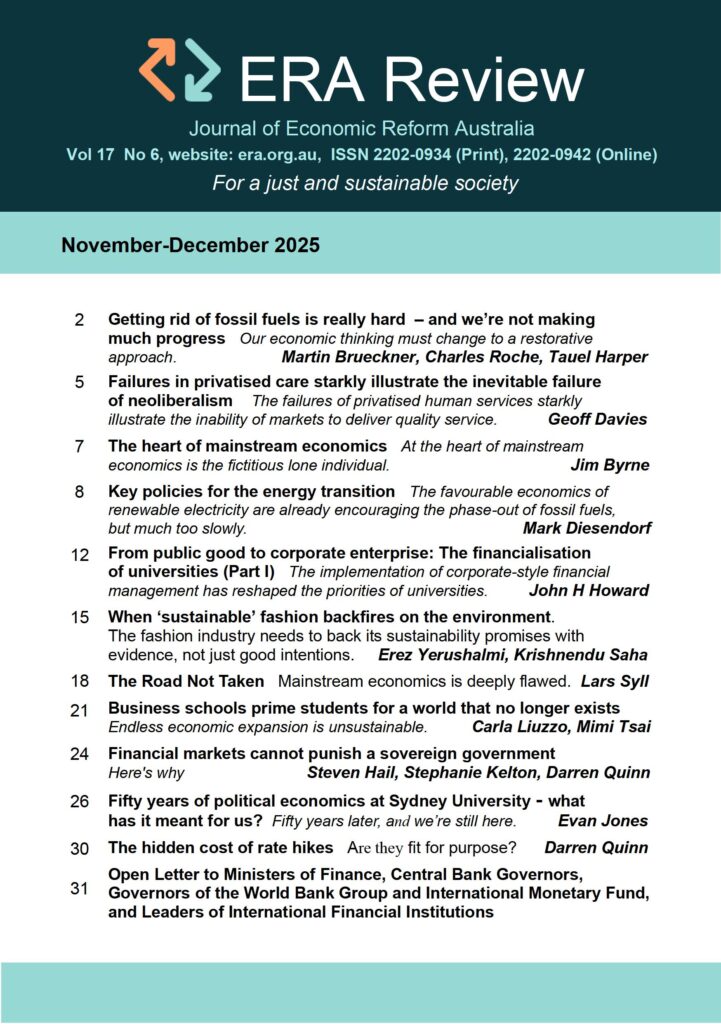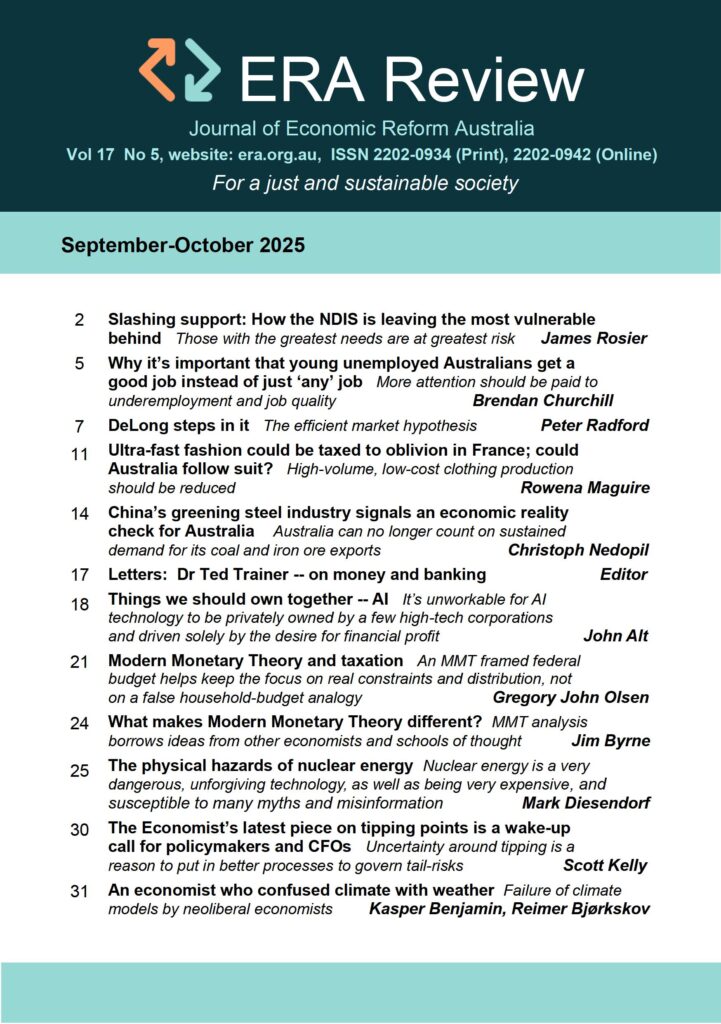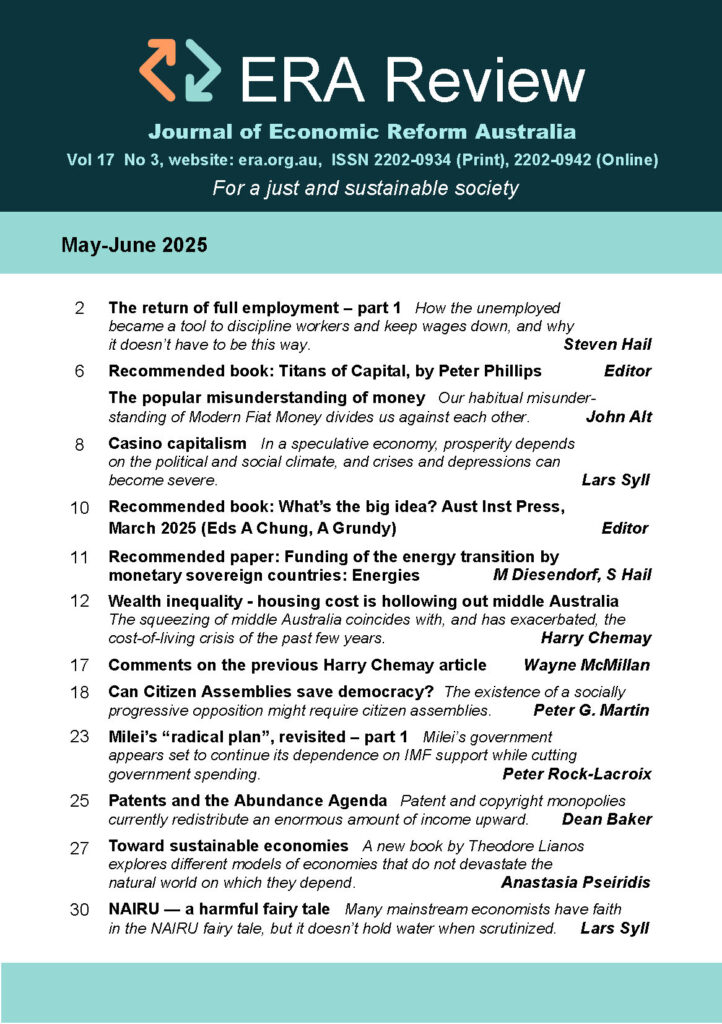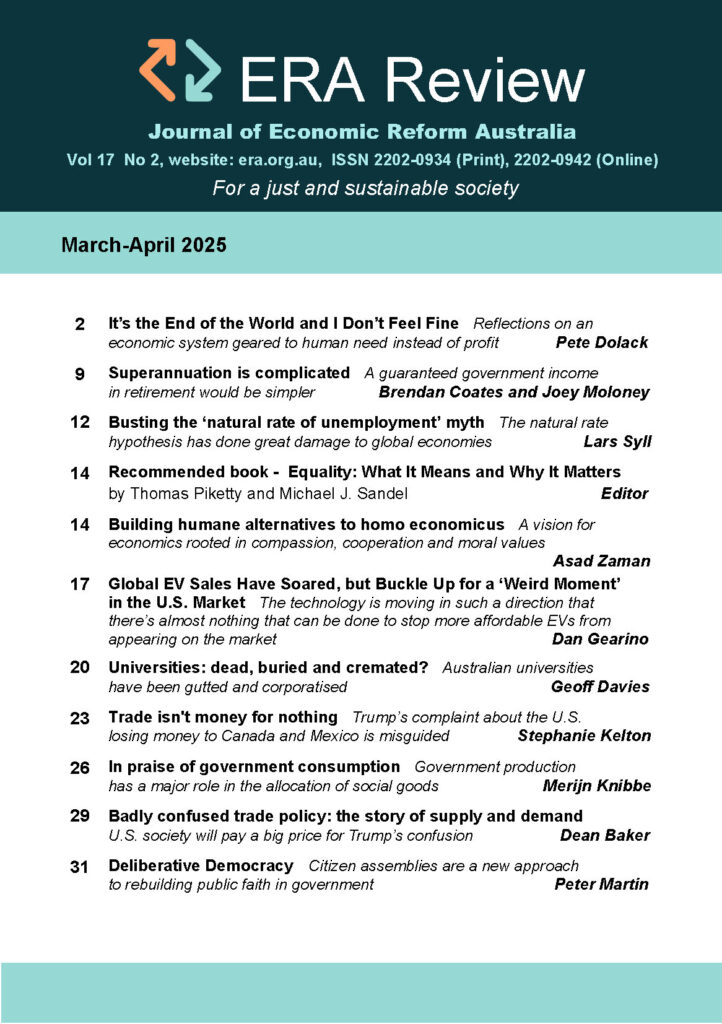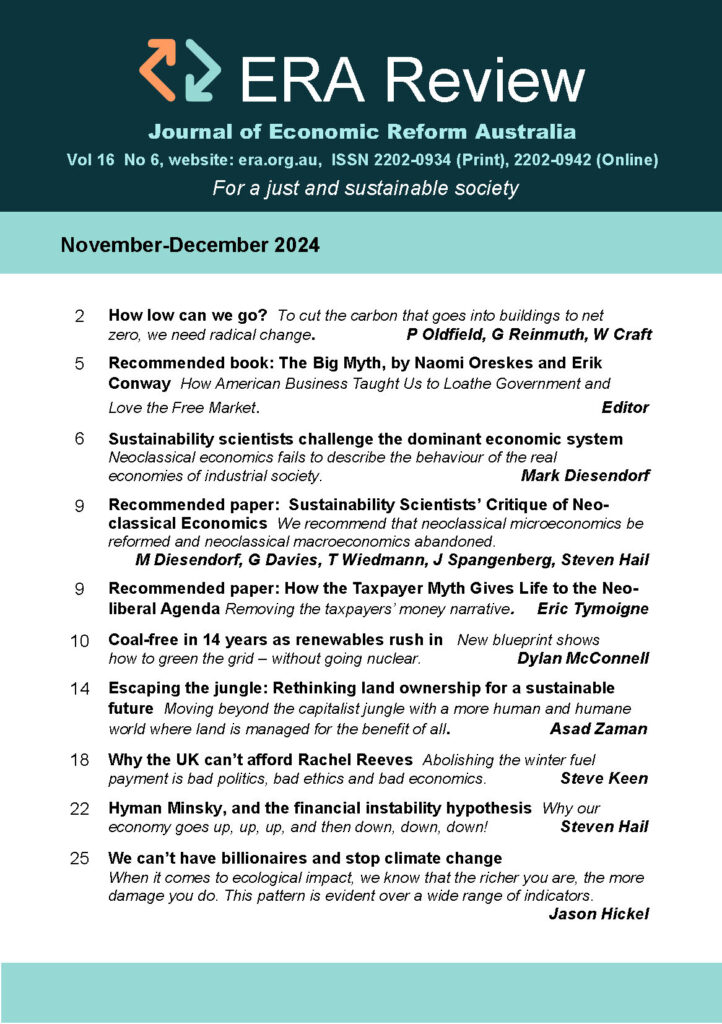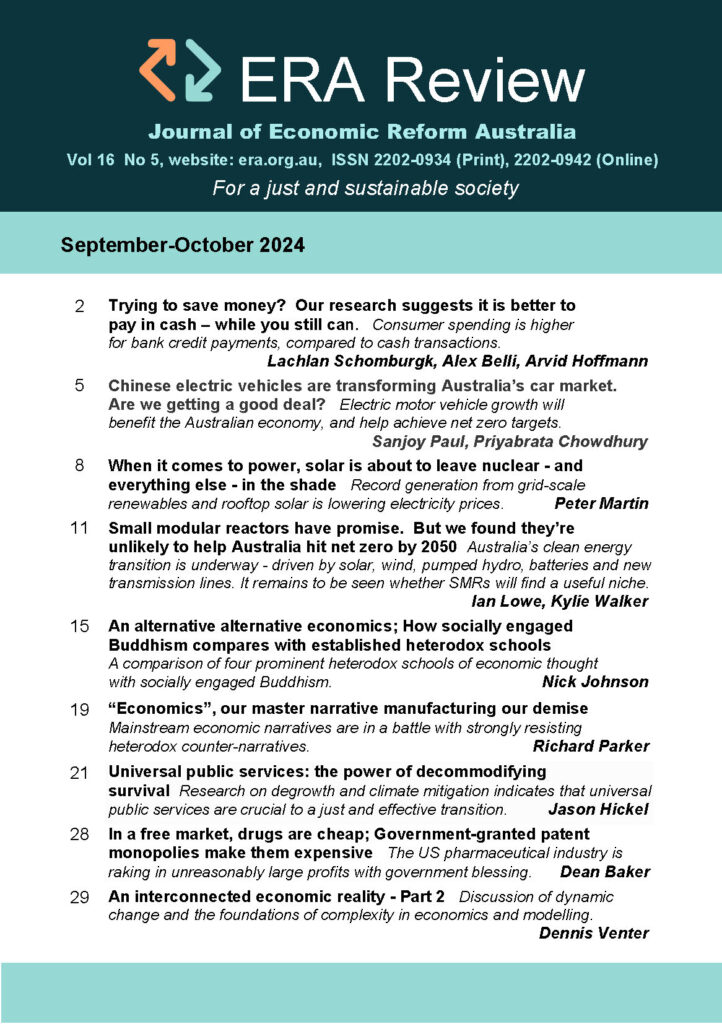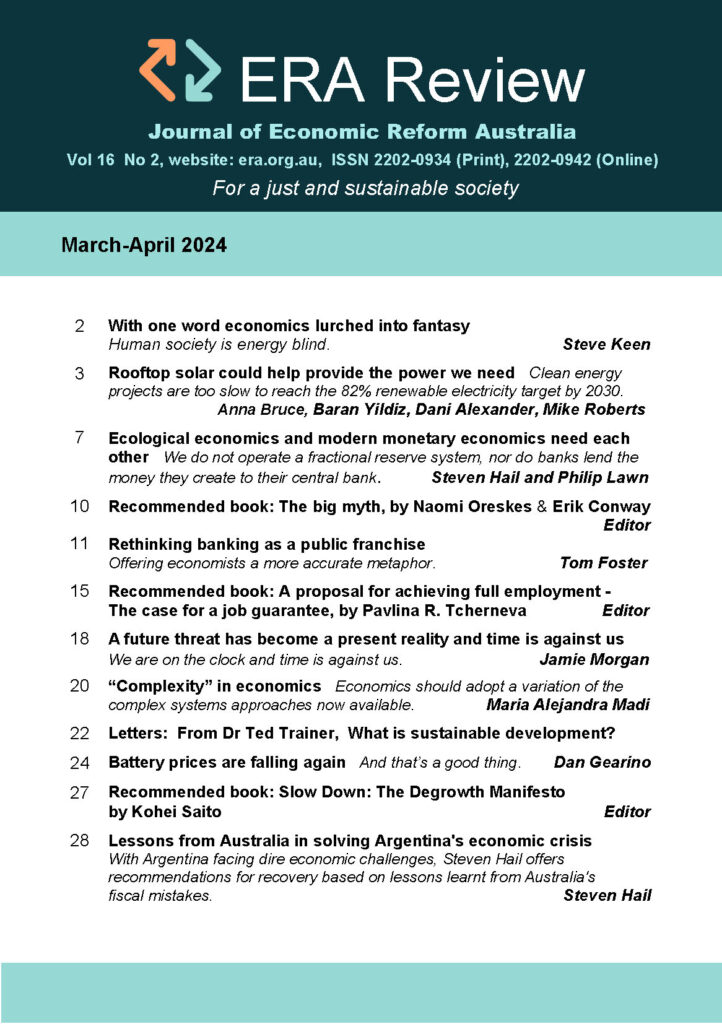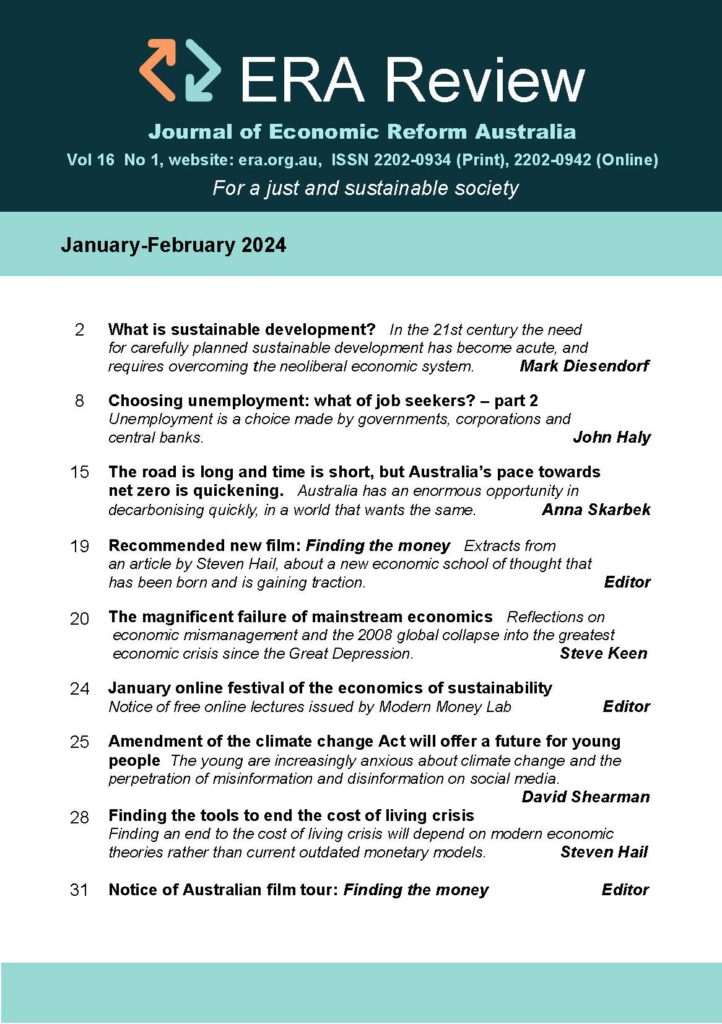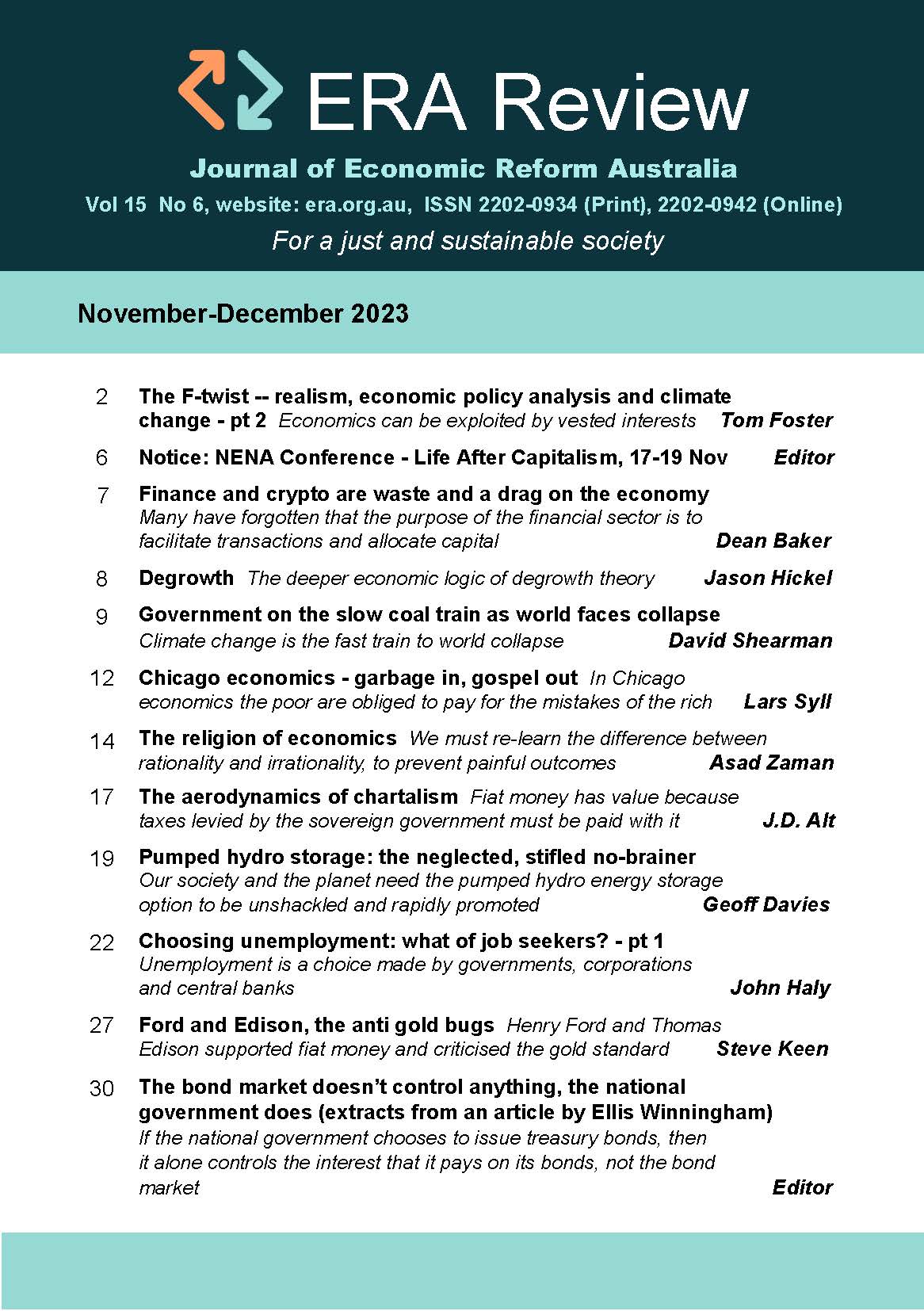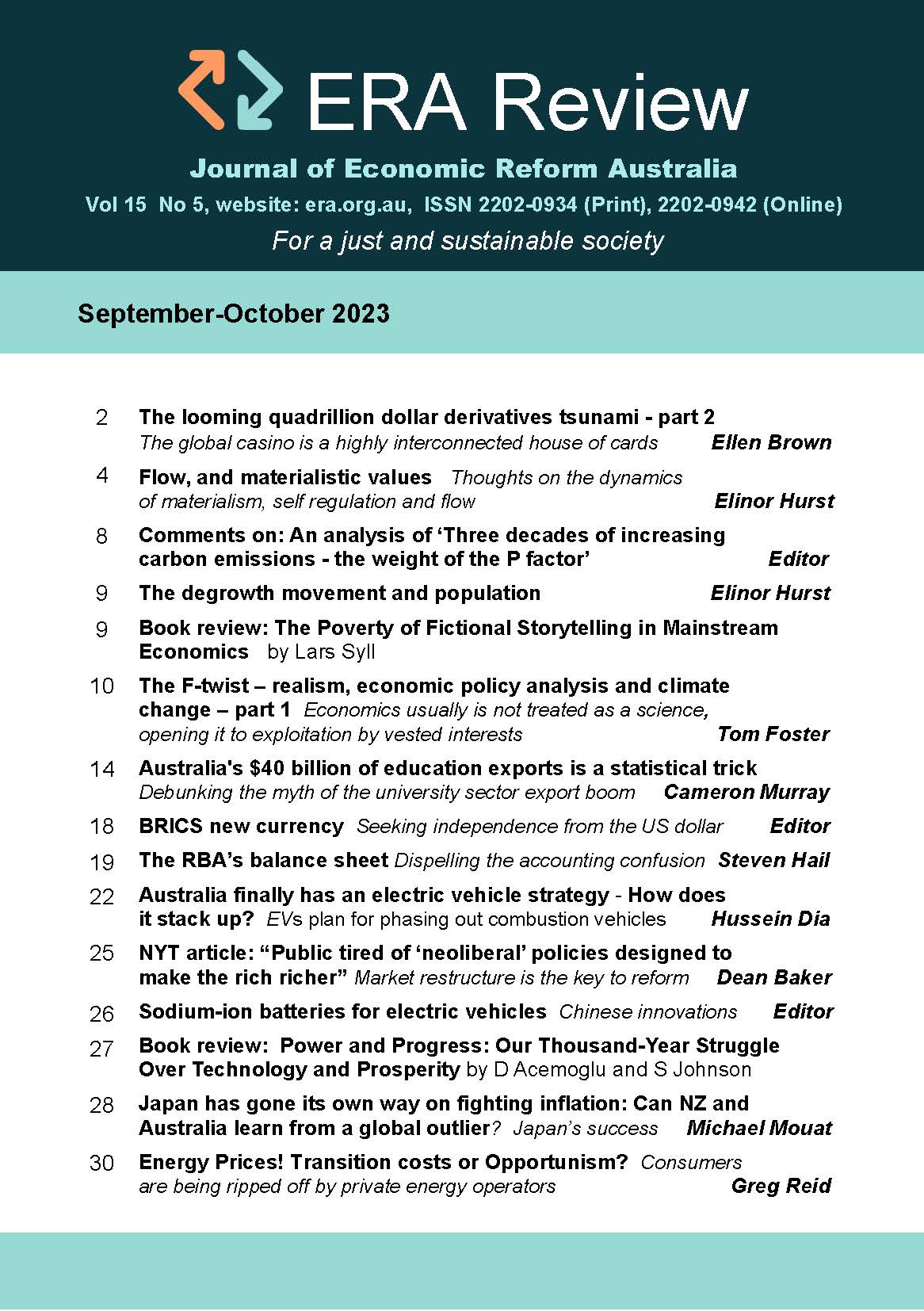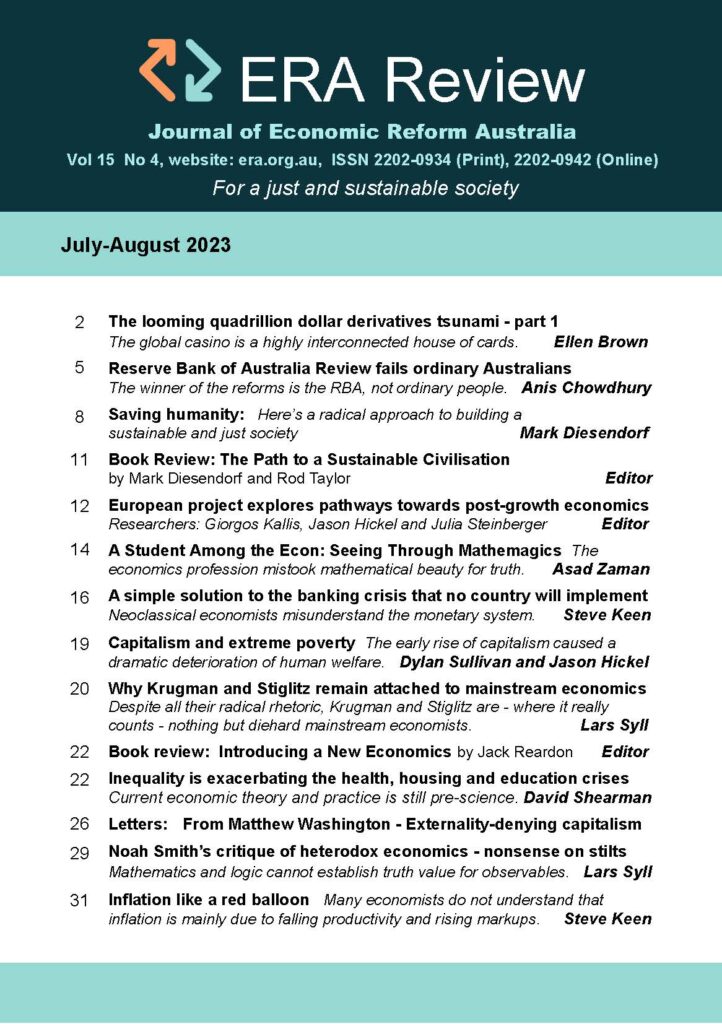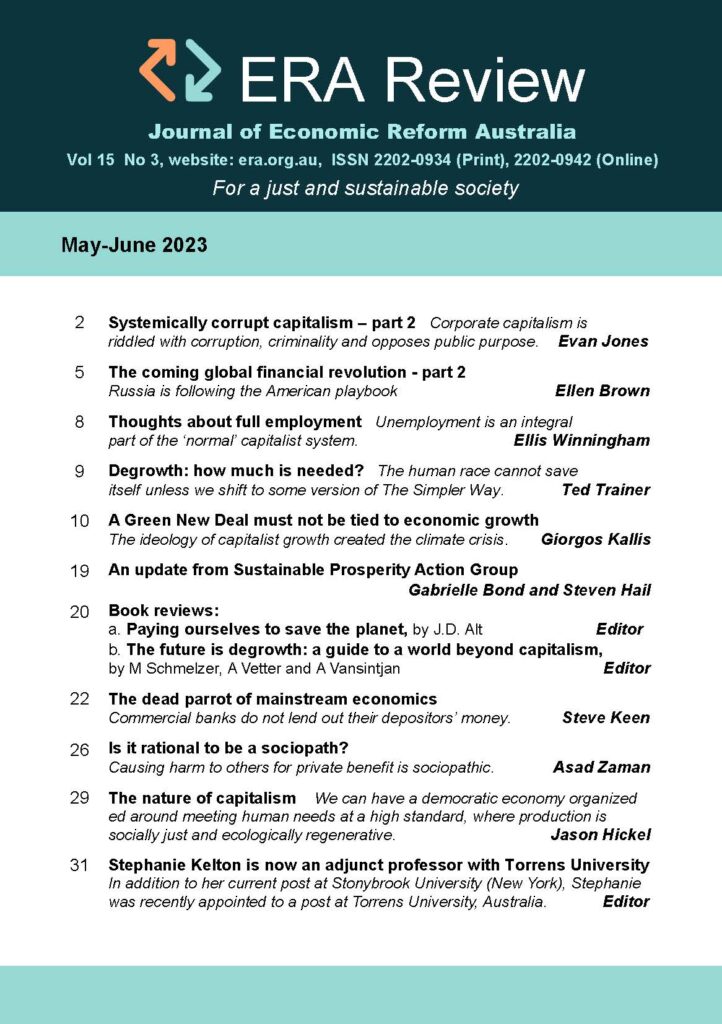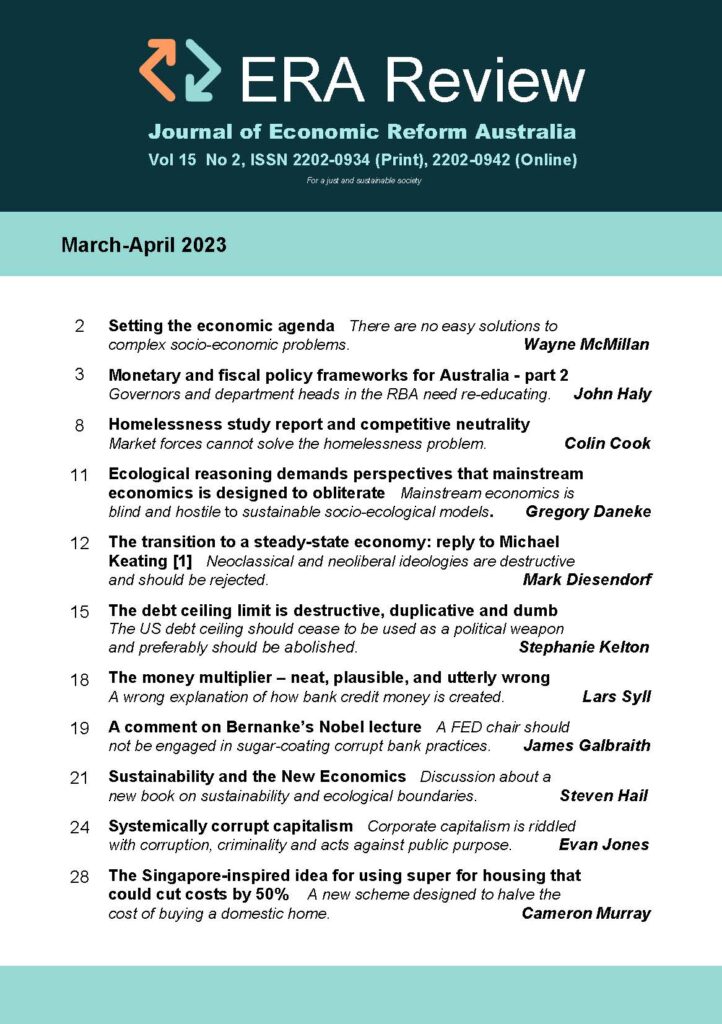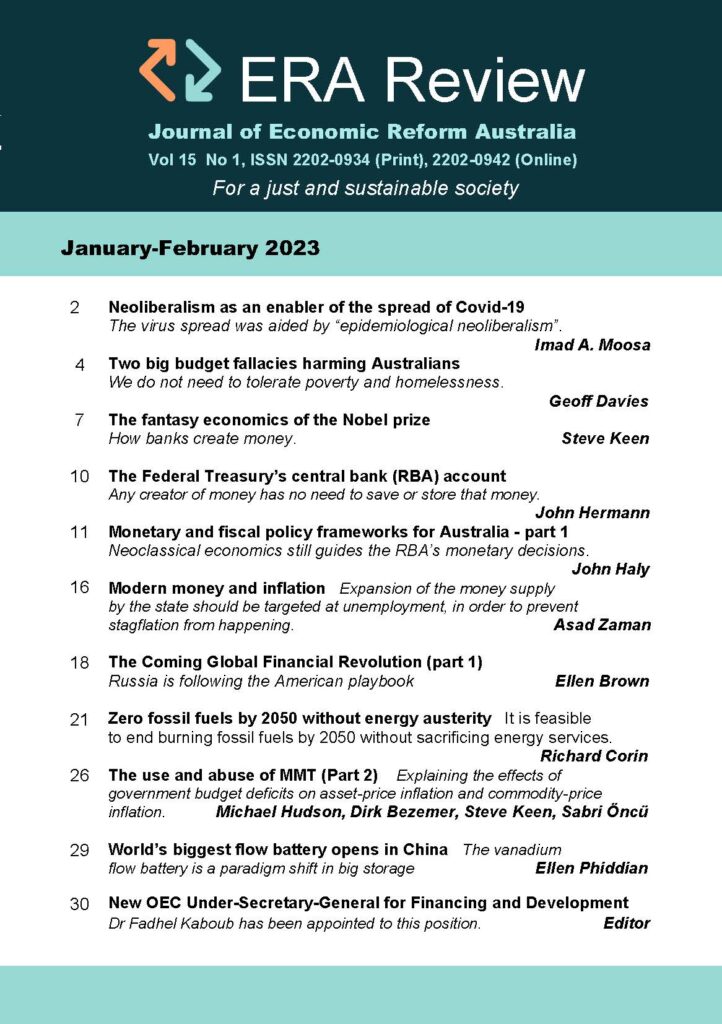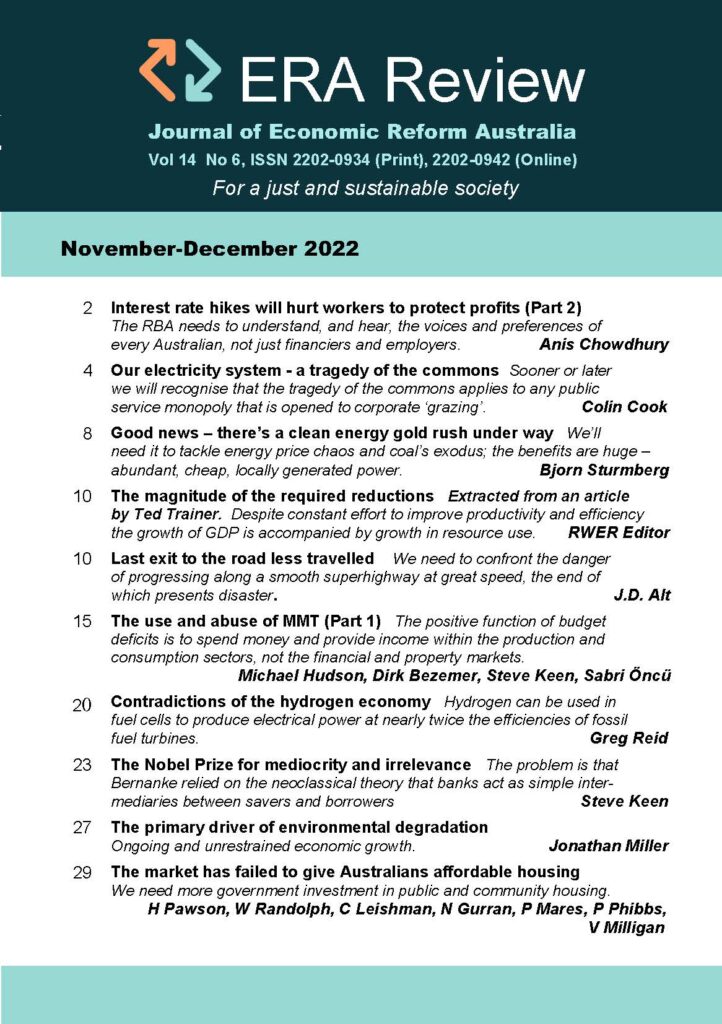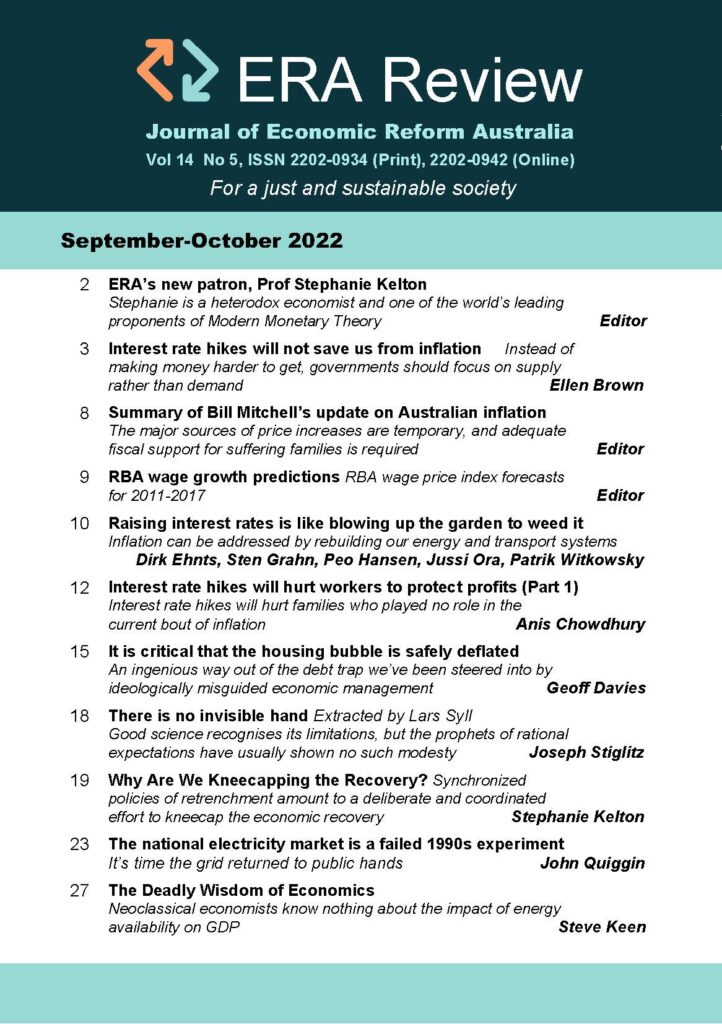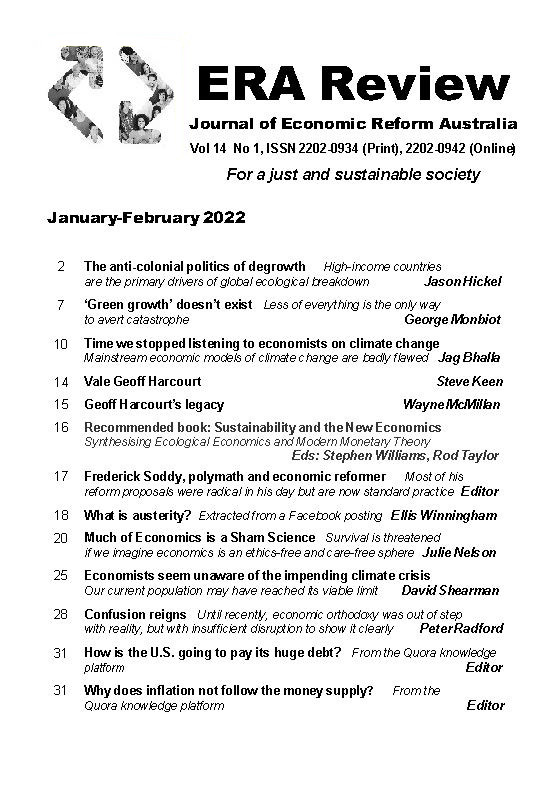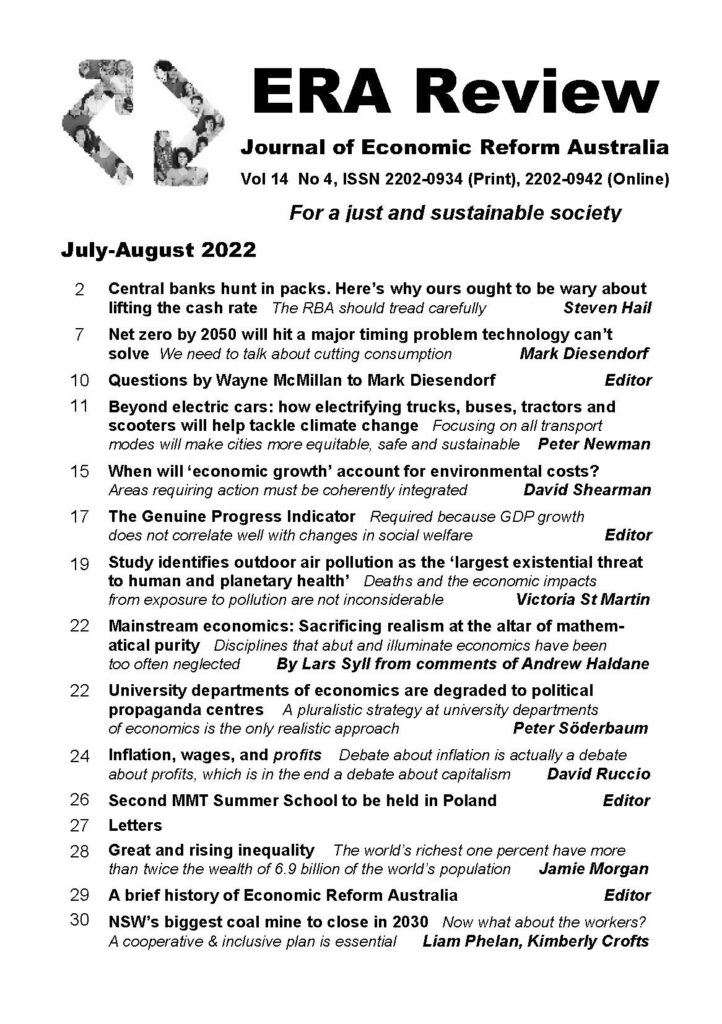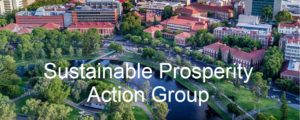How monetary myths conceal power
Asad Zaman
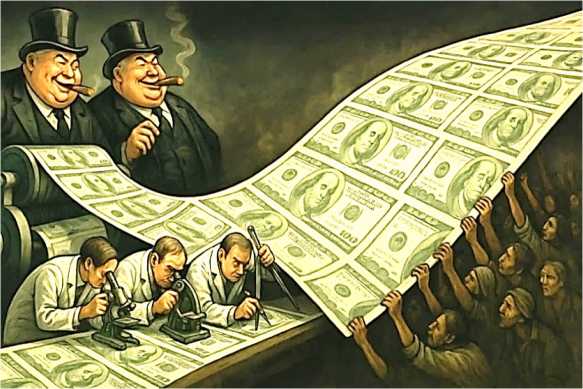
Modern economics rests on a dangerous illusion: that abstract, universal laws – derived primarily from the European experience – can be applied across all societies, times, and contexts. This false assumption has allowed economists to present their theories as being objective and value-neutral, masking the deeply political and historical foundations of economic life. In my earlier article Reclaiming Lost Narratives: A New Approach to Social Science, I argued that we must reject this illusion and return to the original, historically grounded and morally engaged vision of economics. This article illustrates that argument by tracing how mainstream theories about money conceal its true nature as an instrument of power.
Prologue: Rethinking finance from the ground up
Nobel Laureate Paul Romer has observed that standard economic theories about money are “wildly incorrect,” and that the doctrines on which they rest are “fundamentally flawed.” This level of ignorance is astonishing, given that money serves as the lifeblood of modern economies and profoundly shapes lives around the world. Yet, textbooks teach that “money is a veil” -and that to truly understand the economy, one must look through the veil and ignore money altogether. It is this striking disconnect between economics and reality that led to the Global Financial Crisis of 2007. At the University of Minnesota, the influential economist Edward Prescott reportedly taught his graduate students that “postal economics is more central to understanding the economy than monetary economics”. This raises a deep and troubling question: why do economists go to such lengths to downplay the role of money – when, in the real world, the adage “money makes the world go round” is far closer to the truth?
The myths surrounding money are not accidental – they conceal the deeper realities of power. At the heart of the monetary system lies a critical question: Who has the authority to create money, and in whose interests is that power exercised? The links between power and money are foundational to the functioning of capitalist economies. My paper, The Battle for the Control of Money, explores this hidden architecture of monetary power. It shows how money creation is monopolized by a small elite – primarily through private banking systems – who use it to serve their own interests, deepening inequality and reinforcing structures of control. Modern myths about money serves to legitimize existing power configurations, erasing the moral and political dimensions of economic life, and to shield the mechanisms of domination from critical scrutiny.
Despite its central role in shaping economies, the process by which money is created remains one of the most carefully guarded secrets of modern finance. For decades, economics textbooks taught that banks are mere intermediaries – collecting deposits from savers and lending them to borrowers. In reality, private banks create the vast majority of money in the economy simply by issuing loans. This process of money creation “out of nothing,” as even the Bank of England acknowledged in a rare moment of candor, confers immense and largely unaccountable power onthe financial institutions. Yet, students are trained to ignore this. The mantra that “money is a veil” teaches economists to look through it- as if who creates money, how, and for what purpose were irrelevant technicalities. In reality, these questions lie at the heart of how modern capitalism concentrates wealth and power in the hands of a few. Many authors – including Thomas Piketty, in Capital in the Twenty-First Century -have documented the astonishing rise in inequality in recent decades. But the root causes remain elusive within the mainstream frameworks, largely because they fail to examine the true source of inequality: the creation and control of money.
Technocratic Dreams and the Illusion of Apolitical Reform
Proposals to reform money often focus on technical designs, including issuing gold- or silver-backed currency. These “technocratic dreams” imagine that monetary reform is a neutral, engineering problem, solvable through clever design. But such proposals ignore the foundational reality, which is that money is power. Who controls money creation controls the economy – and by extension, society. As argued in my paper Technocratic Dreams, Political Realities, the failure of “monetary reform” banking proposals lies less on their mechanics than on their neglect of the political economy. Reforming money requires challenging entrenched interests and navigating complex institutional structures. This is why textbook definitions – money as a “medium of exchange” or “store of value” -are misleading: they erase power from the equation. A common response of muslims is to advocate for a return to gold and silver currencies. But this too is a technocratic illusion. The power dynamics behind fiat money backed by precious metals would simply reassert themselves through control of gold markets and international trade systems. The problem is not the material of money, but the structures of power behind it. A more detailed exploration can be found in the Technocratic Dreams paper, but the core insight is simple: no monetary reform can succeed without addressing the politics of money creation.
Rebuilding Economics on Moral Foundations
Once we recognize the deep entanglement between money and power, another puzzle of modern economics becomes clearer: how did economics lose its moral compass? The economics discipline began its life as a branch of moral philosophy. Adam Smith himself was a moral philosopher, however today it presents itself as a value-neutral science, akin to physics. This transformation was enabled by regarding money as politically neutral, a mere “veil” that can be ignored. Once power is removed from the picture, questions of justice and ethics are no longer part of the conversation – they become the invisible background. My paper on the Normative Foundations of Scarcity demonstrates how seemingly objective economic concepts conceal underlying normative foundations.
Peeling back the veil of money reveals a troubling reality. In modern economies, money is not just a medium of exchange – it becomes the ultimate measure of value. The “good society” is often defined by maximum GDP, and the “good person” by maximum wealth. In such a world, those who control the creation of money wield extraordinary influence over both economic outcomes and social norms. Any serious attempt to build a just economy must begin by recognizing -and then reining in – this power.
My paper, Reclaiming Economics as a Moral Science: An Islamic Approach to Monetary Reform (2025), addresses this challenge. It argues that the separation of facts from values has crippled economics, leaving it unable to grapple with core issues like justice, power, and ethical responsibility.
Rather than trying to patch moral concerns onto a broken framework, the paper calls for reconstruction of economics as a moral science. Drawing on Islamic intellectual traditions, it envisions a discipline where spiritual and ethical principles are central – not peripheral. In this paradigm, monetary reform is not a technical adjustment but a moral project: one that seeks to align economic structures with divine guidance and collective well-being. An earlier paper entitled “Islam’s Gift: An Economy of Spiritual Development” explains how we can rebuild economics on moral and spiritual foundations.
Responding to evolving configurations of monetary power
Monetary power is not static. It shifts in response to political, institutional, and technological changes. The Great Depression exposed the dangers of unregulated bank-led money creation, prompting reforms that temporarily curtailed financial excess and redistributed economic power more equitably. Later, the collapse of British dominance and the Bretton Woods agreement transferred global monetary power to the United States, establishing the dollar as the world’s reserve currency. Today, we are witnessing a new transition – from fiat money to digital and synthetic forms – further concentrating financial power.
Islamic economics has undergone further transformations in its attempt to cope with the dominant power of capitalism. The first generation sought to capture state power to implement an Islamic system from the top down. The second focused on adapting Islamic finance to capitalist institutions – often compromising its ethical foundations. Learning from both, the third generation calls for building power from the ground up – constructing institutions that reflect Islamic values while remaining responsive to contemporary global configurations of power.
Two recent papers offer complementary third-generation strategies. The first, Monetary Imperialism and Third-Generation Islamic Economics, focuses on diagnosing the problem: how changes in the architecture of global money – especially the shift from physical to synthetic, unregulated money -have eroded the sovereignty of Muslim societies. It traces how modern imperialism operates not through armies, but through financial systems that dictate the terms of economic life. The paper offers a moral and intellectual framework for reclaiming economic agency, rooted in the Islamic tradition and oriented toward community-based resistance.
The second, Islamic Finance and Community Empowerment: A Strategic Vision for the Global Ummah (COMCEC), takes these insights further by proposing a pragmatic path forward. It argues that top-down state reforms are unlikely to succeed, given the entrenchment of Muslim governments within global financial structures. Instead, it proposes a grassroots strategy based on two institutional pillars: Islamic Financial Institutions (IFIs) committed to a “dual bottom line” of profit and service, and mosquebased Khidmat al-Jama‘ah Organizations (MKJs) that deliver community services grounded in Islamic ethics. By coordinating these structures and linking local efforts across borders, the paper envisions a decentralized transnational network capable of rebuilding Islamic economic life from below.
Together, these two papers chart a coherent path: understanding how monetary imperialism works, and outlining how a morally grounded, community-based strategy can counter its effects.
The Path Forward
The above papers chart my progress in understanding the links between money and power over the past few decades. A longer post entitled “Countering Financial Capitalism: An Islamic Journey Through the Hidden Architecture of Money” provides a more detailed discussion of these topics. Nonetheless the most important task remains undone: how can we use this understanding to counter financial power created by the monetary institutions currently dominant. Some suggestions have been made in the two papers listed in the previous section, but a lot of work remains. Once we understand that money creation confers immense power, and that we cannot isolate ourselves from the effects of this power, there seems to be only one solution: we must create our own money. Proposals to revive the gold dinar or silver dirham aim at monetary independence, but they do not recognize the links to power and that most of the world’s precious metals are already held by powerful elites. Such reforms risk entrenching the very power they seek to challenge. A better alternative would be a labor-based currency, calibrated to the widespread availability of unskilled labor in many parts of the Ummah – a tragic but undeniable reality. Developing such systems requires careful analysis of local community currency models that can operate within the diverse regulatory and political contexts of the Muslim world. Also, it would be essential to link these initiatives around the globe, so as to create the strength required to combat global capitalism. This is the focus of my current research.
Dr Asad Zaman is vice chancellor of the Pakistan Institute of developmental Economics, and possesses a distinguished academic career as well as a voluminous publication record.
Comments by Kevin Cox
Local Currency Systems are a great idea, but they suffer because ensuring money represents value to users is hard. It works with small groups until someone games the system or when value is transferred in and out of the group. But we already have a system for transferring money based on existing currencies, and it works remarkably well for wealthy people – even though it is costly and inefficient for most people.
There are other solutions than local currencies. For example, instead of local currencies, we could have a single currency with the issuance of new government money to community groups for a specific purpose. Who receives new money and at what cost is a technical problem which we can solve in many different ways.
One solution is for communities to acquire government money for specific purposes and repay it to the government, rather than having governments allow banks to lend money and repay it through a share of the profits via taxation. Accessing money in this way will go a long way towards stopping inflation caused by unearned capital gains, as it doubles the utility of money by removing the cost of interest and the cost of taxation on profits to repay the loan. In economic terms, it increases the productivity of the monetary system by requiring the creation of much less money to fund infrastructure.

